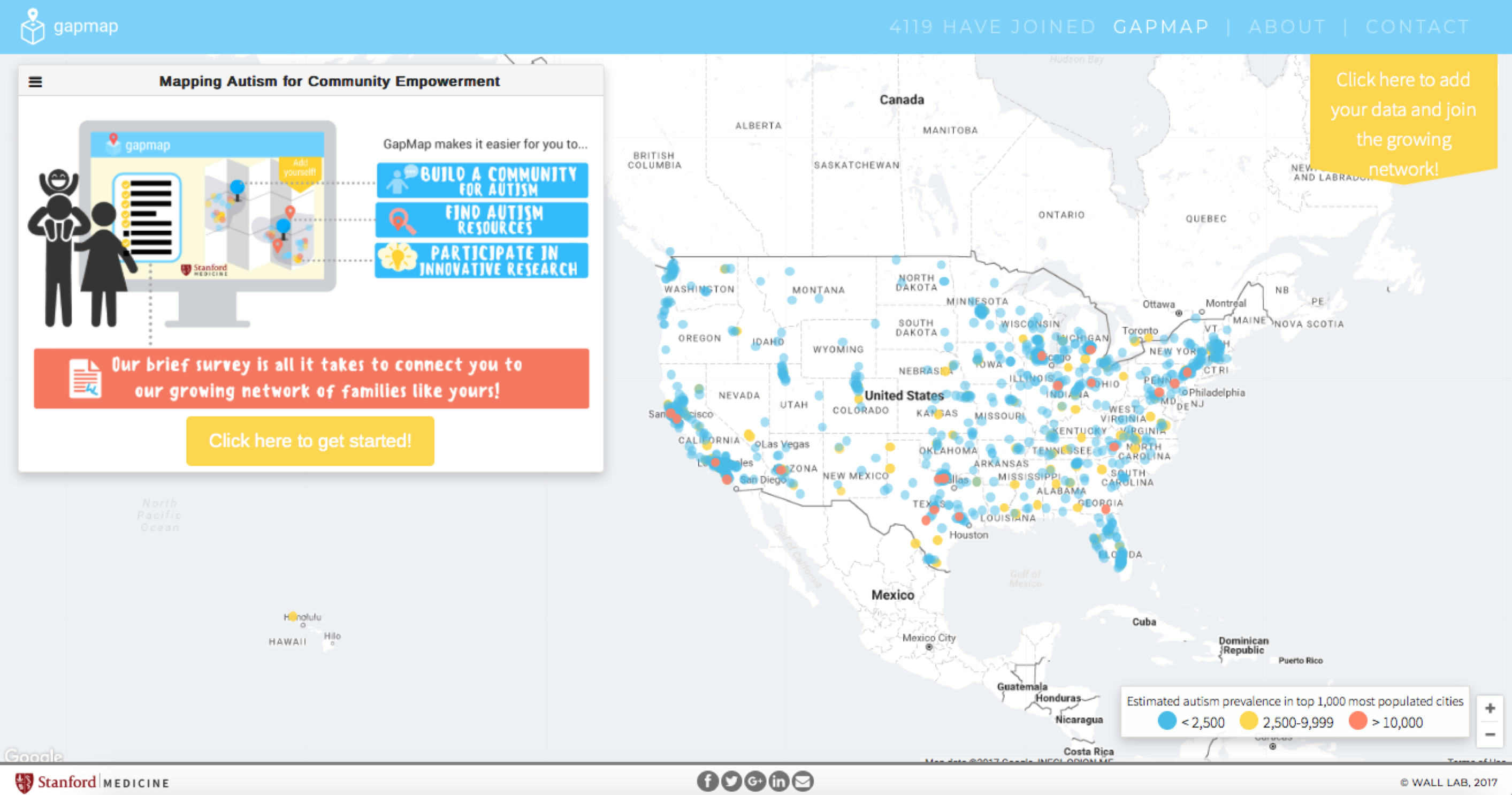Docket #: S17-304
GapMap -- Bridging the Gap in Resource Access for the Autism Community
Stanford researchers have developed a software tool called GapMap that contains one of the most robust resource databases for families with autism, compiled via exhaustive machine-learning methods, and highlights gaps in clinical services. Using crowd-sourced input from the autism community, GapMap prospectively captures valuable demographic and behavioral data from users while also displaying local and validated resources and therapies. Its real-time, prevalence map for autism advocates the expansion of medical services and catalyzes telemedicine development and other remote technology to bring care to patients.
Stage of Research
The researchers' pilot study mapped resources and prevalence using census and autism treatment facilities information. The latest version, GapMap, is an interactive site (accessible to any internet connected device) that uses feedback from caregivers of children with autism to capture demographic, behavioral, and resource usage; and calculates detailed geographical prevalence to augment a complete, real-time understanding of autism resource epidemiology. It can drive critical research to deliver better care for autism and deliver actionable information to affected families throughout the life course of the condition.
Future plans include growing listings for diagnostic services, behavioral therapy, speech therapy, and concierge medicine with 'crowd' reported ratings, wait times per service type, and ways to cross-validate crowd reported lengths of waiting lists with the wait time provided directly by the front office of the service site itself.
GapMap - a tool for families to drive discovery in autism research while finding local resources and therapies. Click on the figure above to enlarge and view.
Applications
- Autism resource aggregator:
- Families can find up-to-date information for resources they need
- Service providers and policy makers can identify gaps in resources
- Cohort selection tool for autism epidemiology, targeted diagnostic and therapeutic research, etc.
Advantages
- Quick, easy, comprehensive (over 30,000 curated providers) access to autism resources for the autism community
- Easy to read map shows geographic disconnects in access to care, autism prevalence
Publications
- Nikhila Albert, Jena Daniels, Jessey Schwartz, Michael Du, and Dennis P. Wall, The GapMap Project: A mobile surveillance system to map diagnosed autism cases and gaps in autism services globally, Mol Autism, 2017; 8:55; published online 2017 Oct 23; doi:10.1186/s13229-017-0163-7.
- Jena Daniels, Jessey Schwartz, Nikhila Albert, Michael Du, and Dennis P. Wall, "GapMap: Enabling Comprehensive Autism Resource Epidemiology," JMIR Public Health and Surveillance, Vol. 3, No. 2 (May 4, 2017).
- Digitale , Erin. “Scientists crowdsource autism data to learn where resource gaps exist.” Stanford Medicine News Center, 8 May 2017.
Related Links
Similar Technologies
-
A clinical test for early diagnosis of abdominal aortic aneurysm S17-285A clinical test for early diagnosis of abdominal aortic aneurysm
-
Methods for interpreting whole-exome next generation sequencing S15-348Methods for interpreting whole-exome next generation sequencing
-
Reconfiguration of Tabular Data for Discovery of Deep Interaction Features and its Applications in Analysis of Multidimensional Data S22-041Reconfiguration of Tabular Data for Discovery of Deep Interaction Features and its Applications in Analysis of Multidimensional Data
